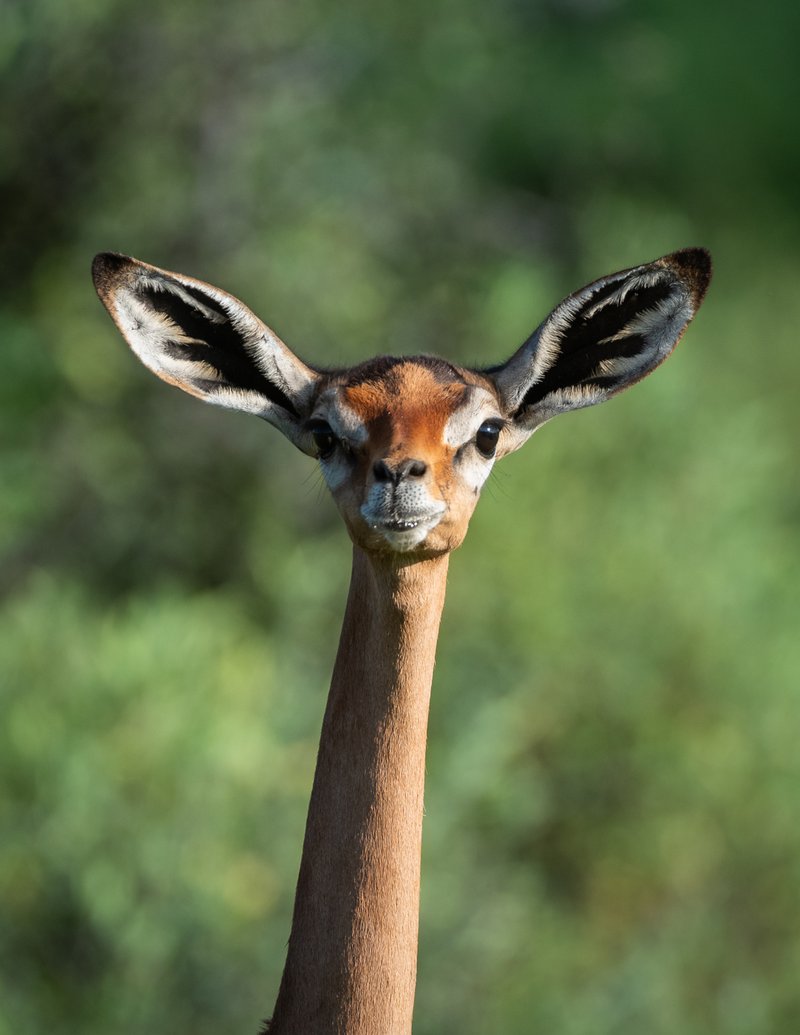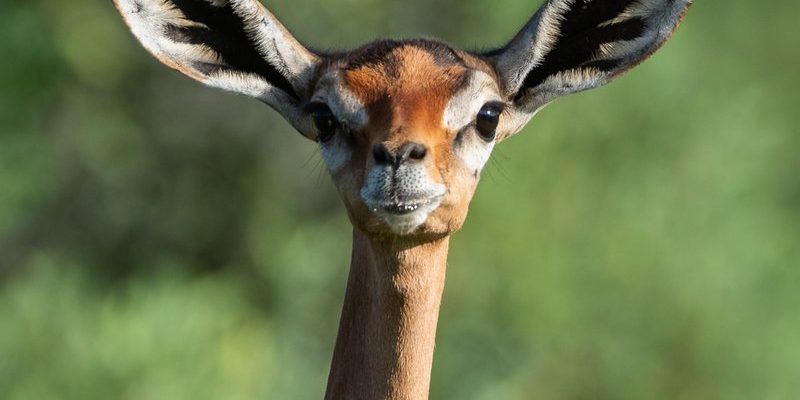
Gerenuks are often misunderstood, sometimes even confused with other types of gazelles or antelopes. Their long necks and slender bodies set them apart, giving them a unique charm. In this article, we’ll dive into some common myths about the gerenuk, clear up any misunderstandings, and share fun facts that’ll help you appreciate these incredible animals. Let’s explore the truth behind the gerenuk!
The Gerenuk is Just Another Gazelle
You might think of the gerenuk as just another gazelle, but honestly, that’s not quite the case. While they fall under the same family, Bovidae, they have unique traits that set them apart. For starters, the gerenuk’s long neck gives it an edge when reaching for leaves high in trees. Most gazelles prefer to stay close to the ground, grazing on grass.
Moreover, gerenuks have shorter limbs than typical gazelles, making them adapt well to their habitat in dry and arid regions. They’ve evolved to be more selective feeders, munching on the leaves and buds of shrubs. This behavior is different from other gazelles that primarily graze on grasses. So, while they share some family traits, their feeding habits and physical adaptations tell a different story.
Gerenuks Are Left Alone in the Wild
It’s a common misconception that gerenuks are completely solitary creatures, just roaming around without a care in the world. Here’s the thing: while they are often seen alone or in small groups, they do exhibit social behaviors. Gerenuks can be part of larger mixed groups, especially when food is abundant.
In times of drought or food scarcity, you might find them wandering in pairs or even forming larger herds to maximize their foraging capabilities. So, while they are independent animals, they also know the benefits of teamwork when it comes to finding food and staying safe from predators.
Gerenuks Can’t Adapt to Different Environments
Many people believe that gerenuks are strictly desert dwellers with very little adaptability. Let me explain: while these animals are well-suited to their dry habitats, they have shown remarkable flexibility in their living conditions. They thrive in various environments, including scrublands, bushlands, and even savannahs.
This adaptability is partly due to their diet. Gerenuks can adjust what they eat based on their surroundings. They can switch from leaves to fruits, depending on what’s available. This flexibility helps them survive in changing environments, which is pretty impressive for such a specialized species!
Gerenuks are Always Antelope Prey
It’s easy to assume that all animals like the gerenuk are just prey for larger predators. While it’s true that they are part of the food chain, they have unique survival strategies. Gerenuks rely heavily on their incredible agility and keen eyesight.
When they sense danger, they will often freeze in place, blending into their environment. This behavior, paired with their ability to leap away quickly when spotted, helps them evade threats from predators like lions and cheetahs. So, while they are vulnerable, they are not completely defenseless. They’ve got tricks up their sleeves (or hooves, in this case)!
Gerenuks Don’t Need Water
Another myth is that gerenuks can survive without drinking water. This misconception likely stems from their ability to thrive in arid conditions. Here’s the truth: while they can go long periods without direct water, they do need it.
Gerenuks primarily get moisture from the leaves and fruits they consume. During the rainy season, they will drink water more frequently. However, during the dry season, their clever foraging allows them to stay hydrated without relying solely on water sources. It’s this interesting adaptation that allows them to flourish in less hospitable environments.
Gerenuks Are Always Calm Creatures
You might picture the gerenuk as a calm, serene creature. However, they can also display some surprising behaviors when it comes to their dynamics with other animals. While they often appear graceful and peaceful, they can be quite competitive when it comes to mating and resources.
Male gerenuks, in particular, can be territorial. During the breeding season, they’ll engage in head-butting contests to assert dominance and attract females. This might seem at odds with their gentle appearance, but it’s all part of the natural survival and reproductive strategies that these unique animals adapt to.
Gerenuks Are Not Endangered
Finally, a common belief is that gerenuks are thriving and not at risk of extinction. Unfortunately, this isn’t true. Due to habitat loss and hunting, their populations have suffered decline. Gerenuks are classified as near threatened by the International Union for Conservation of Nature (IUCN).
Conservation efforts are necessary to protect their habitats and promote awareness about their plight. Supporting such efforts can help ensure that future generations will be able to enjoy the beauty of these unique long-necked gazelles.
In summary, the gerenuk is a fascinating creature that deserves our appreciation and respect. By debunking common myths and misconceptions, we can develop a deeper understanding of these unique animals. Next time you hear someone talk about the gerenuk, you can share these insights and maybe even inspire a bit of curiosity about this incredible species!

